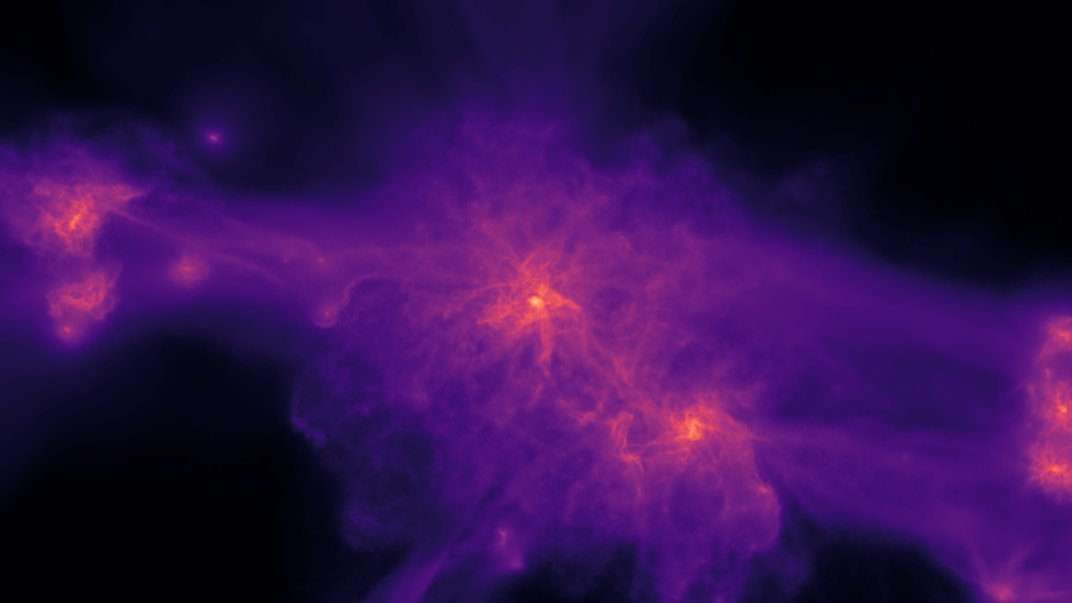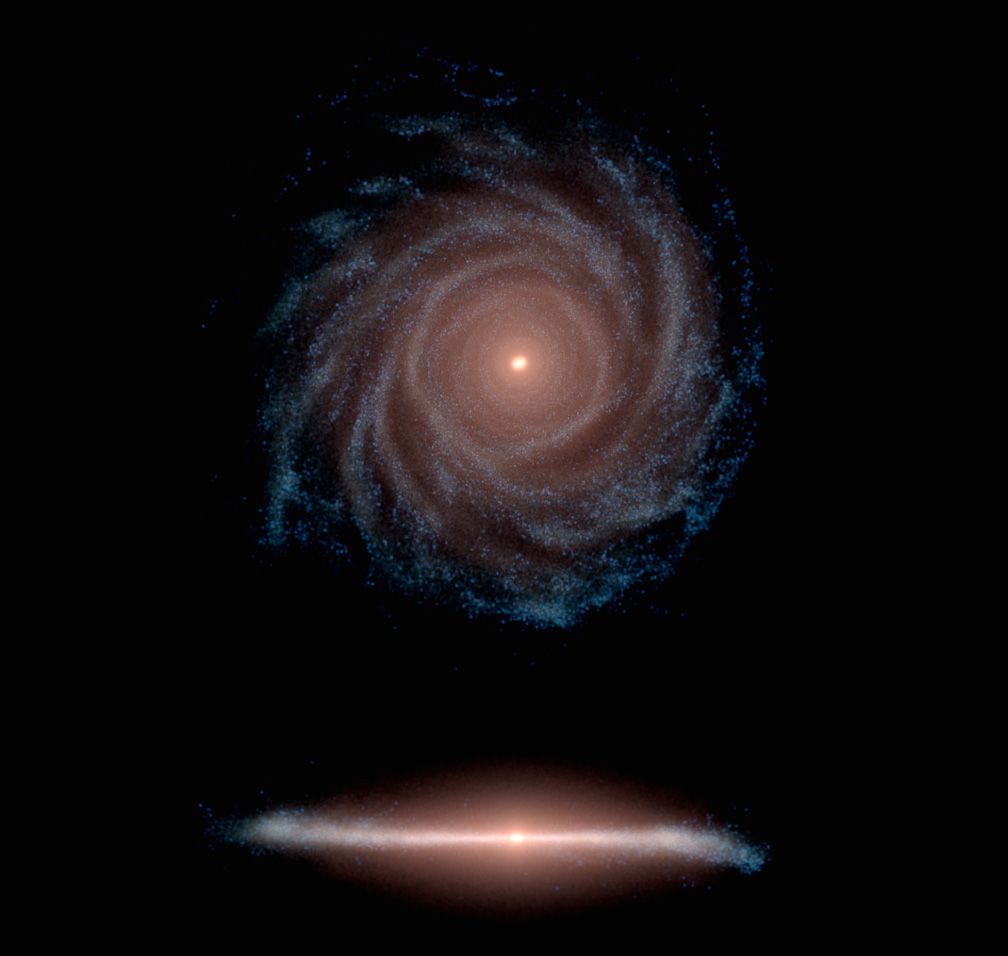Supercomputers Create Breathtaking Simulations of Spiral Galaxies
The simulations took months of modeling to complete—and the results can help scientists learn about the formation of galaxies
Peering through a telescope, a galaxy looks like single, sparkling entity. But up close, it’s one of the most complex systems in the universe—an agglomeration of billions of stars, stellar remnants, dust and gas all swirling around one another.
But galaxies are a challenge to study. So researchers at the Auriga Project created a massive simulation, depicting the formation of a Milky Way-sized spiral galaxy. They hope that the system can act as a baseline to learn about how the galaxy has developed and changed over the eons.
According to a press release, the team turned two supercomputers—the Germany-based Hornet and SuperMUC—loose onto the project. They used new state of the art computer code, which included models for gravity, star formation, gas hydrodynamics, supernovas and magnetic fields between gas and dust clouds. They then ran 30 galaxy simulations at high resolution and six at very high resolution over the course of several months.
According to the Auriga Project website, other attempts to simulate galaxy formation have resulted in galaxies that weren’t quite right—from weird bulges to unusual spins that didn’t conform to the what astronomers observe in the skies. The new project attempted to correct those mistakes by adding in elements other simulations did not model, especially the magnetic fields, or did not have the processing power to compute.
It worked. The simulation created spiral-shaped galaxies that seem to conform to what scientists know about our galaxies similar in size to our own. The researchers published their results on the Monthly Notices of the Royal Astronomical Society.
“The outcome of the Auriga Project is that astronomers will now be able to use our work to access a wealth of information, such as the properties of the satellite galaxies and the very old stars found in the halo that surrounds the galaxy,” Robert Grand of the Heidelberg Institute for Theoretical Studies and lead author of the paper says in the press release.
Besides creating a baseline for studying galaxy formation, the models are also just plain beautiful, showing just how wondrous the universe can be.





